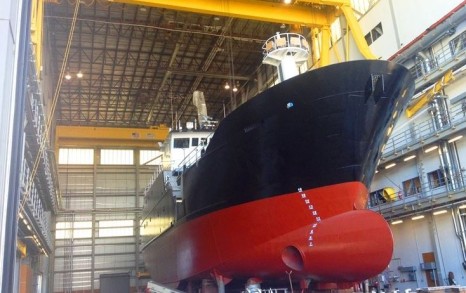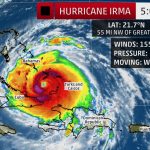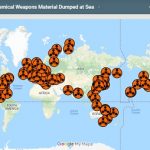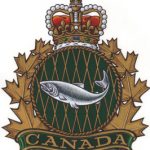Daily Archives: September 11, 2013
Adult pink salmon perish in spawning channel – More info needed to determine causes of periodic de-watering: DFO official
![]() Thousands of adult pink salmon died last week when the lower portion of the Mamquam spawning channel ran dry, stranding them in shallow puddles below a point where the water level still supported live spawners. more@thechief 21:57
Thousands of adult pink salmon died last week when the lower portion of the Mamquam spawning channel ran dry, stranding them in shallow puddles below a point where the water level still supported live spawners. more@thechief 21:57
From Cat Food to Sushi Counter: The Strange Rise of the Bluefin Tuna
 Several decades ago, the very same fish were essentially worthless worldwide. People caught them for fun along the Atlantic Coast—especially in Nova Scotia, Maine and Massachusetts—and though few ever ate their catch, they didn’t usually let the tuna go, either. During the height of the tuna sport fishing craze in the 1940s, ’50s and ’60s, the big fish were weighed and photographed, then sent to landfills. Others were mashed up into pet food. [email protected] 18:16
Several decades ago, the very same fish were essentially worthless worldwide. People caught them for fun along the Atlantic Coast—especially in Nova Scotia, Maine and Massachusetts—and though few ever ate their catch, they didn’t usually let the tuna go, either. During the height of the tuna sport fishing craze in the 1940s, ’50s and ’60s, the big fish were weighed and photographed, then sent to landfills. Others were mashed up into pet food. [email protected] 18:16
Prowler Fisheries Ready to Christen New Freezer Longliner
 Prowler Fisheries, an Alaska freezer longliner company, will christen its newest freezer longliner vessel, the F/V Arctic Prowler, in ceremonies Oct. 5 at the Ketchikan Shipyard in Ketchikan, AK. more@fishermensnews more@ Alaska Fisheries Development Foundation 16:10
Prowler Fisheries, an Alaska freezer longliner company, will christen its newest freezer longliner vessel, the F/V Arctic Prowler, in ceremonies Oct. 5 at the Ketchikan Shipyard in Ketchikan, AK. more@fishermensnews more@ Alaska Fisheries Development Foundation 16:10
IFQ market for AK halibut, sablefish in a stall for all regions except Southeast

Alaska’s record salmon season has permit brokers hopping, especially for seine cards. But it’s a very different story for the quota share market. This is Fish Radio. I’m Laine Welch – The market for quota shares is slower than ever. Listen 15:57
Owl vs. owl: Feds give final approval to owl-killing experiment – Sooo. How about a seal killing experiment before the Cod become extinct?

Bad Owl

Good Owl
GRANTS PASS, Ore. — Federal wildlife officials are moving ahead with an experiment to see if killing a rival owl will help save the northern spotted owl from extinction. The U.S. Fish and Wildlife Service said Tuesday it gave final approval to a plan to send trained hunters into the woods to shoot barred owls. Where are the Tree Huggers? more@peninsuladailynews 15:48
Thanks for all the fish – Part III – ‘There’s fish in them thar waters!’
 Today, we take it for granted that Seattle is homeport to a large Alaska fishing fleet and a related multi-billion dollar fish and maritime industry. TV shows like the Discovery Channel’s “Deadliest Catch” have made people more aware of what goes on in the Northern Pacific and the lucrative dangers of the Bering Sea fishery. But that industry wouldn’t have happened for us Americans if it weren’t for the purchase of Alaska from Russia in 1867 — and that transaction might not have occurred without a nudge from Washington’s own pioneers. It is little remembered today, but Seward’s Folly, as the Alaska annexation was called, happened when it did in part because of a prod from the legislature in Olympia. Yes, sometimes they get it right. more@crosscut 14:47
Today, we take it for granted that Seattle is homeport to a large Alaska fishing fleet and a related multi-billion dollar fish and maritime industry. TV shows like the Discovery Channel’s “Deadliest Catch” have made people more aware of what goes on in the Northern Pacific and the lucrative dangers of the Bering Sea fishery. But that industry wouldn’t have happened for us Americans if it weren’t for the purchase of Alaska from Russia in 1867 — and that transaction might not have occurred without a nudge from Washington’s own pioneers. It is little remembered today, but Seward’s Folly, as the Alaska annexation was called, happened when it did in part because of a prod from the legislature in Olympia. Yes, sometimes they get it right. more@crosscut 14:47
No-fishing zones can’t be justified, hurt coastal economy
Recreational and commercial fishermen and coastal business should be very concerned about an effort by the South Atlantic Fishery Management Council to create more no-fishing zones off North and South Carolina, Georgia and east Florida in a misguided reaction to radical environmental groups that are pushing for extraordinary and unjustifiable protections for two deep-water grouper species. more@islandpacket 13:47
Fishermen host meeting about changes at Stellwagen Bank
 Marshfield —Local fishermen are concerned about a Stellwagen Bank proposal that would eliminate a key fishing area from the region’s industry. According to the Stellwagen Bank Charter Boat Association (SBCBA), a proposed Sanctuary Environmental Research Area (SERA) would shut down all bottom fishing on 55 nautical square miles of Stellwagen Bank. more@marshfieldmariner 13:41
Marshfield —Local fishermen are concerned about a Stellwagen Bank proposal that would eliminate a key fishing area from the region’s industry. According to the Stellwagen Bank Charter Boat Association (SBCBA), a proposed Sanctuary Environmental Research Area (SERA) would shut down all bottom fishing on 55 nautical square miles of Stellwagen Bank. more@marshfieldmariner 13:41
Gulf fishermen get 14-day fall red snapper season despite uncertainty surrounding the fishery
 Federal scientist still don’t know for certain how many pounds of red snapper recreational fishermen caught this year, but the Gulf of Mexico’s chief fisheries manager announced Tuesday afternoon that he is authorizing a 14-day fall season opening at 12:01 a.m. Oct. 1. “We wanted to go ahead and announce the season so fishermen can begin planning trips,” Crabtree said Tuesday afternoon. [email protected] 13:33
Federal scientist still don’t know for certain how many pounds of red snapper recreational fishermen caught this year, but the Gulf of Mexico’s chief fisheries manager announced Tuesday afternoon that he is authorizing a 14-day fall season opening at 12:01 a.m. Oct. 1. “We wanted to go ahead and announce the season so fishermen can begin planning trips,” Crabtree said Tuesday afternoon. [email protected] 13:33
Tiny number of Asian carp could be big problem for the Great Lakes
 “This species will have a huge impact on the food web,” says Professor Cuddington. “Not only is it a fast-growing fish physically, but the population itself grows very quickly. A female can lay well over a million eggs a year, and with no known predators present in the Great Lakes, the Asian carp could dominate the waters and impact fisheries.” [email protected] 10:48
“This species will have a huge impact on the food web,” says Professor Cuddington. “Not only is it a fast-growing fish physically, but the population itself grows very quickly. A female can lay well over a million eggs a year, and with no known predators present in the Great Lakes, the Asian carp could dominate the waters and impact fisheries.” [email protected] 10:48
Scientists say radiation levels low to non-existent in BC-caught fish

As the Fukushima nuclear power plant continues to leak radioactive material, what does that mean for fish caught in the Pacific Ocean off the BC coast? Environment Canada says there’s nothing to worry about right now. more@news1130 10:41
Webinar: The Gulf of Mexico “Dead Zone”: Linking hypoxia to fish and fisheries 10:30 – 11:30 am EDT on Wednesday 25-September 2013
INFO: Dr. Kevin Craig is a Research Fishery Biologist at the NOAA National Marine Fisheries Service in Beaufort NC. He studies how natural and anthropogenic processes influence the population and community dynamics of harvested species in coastal ecosystems. He is currently investigating linkages between coastal watersheds and habitat quality of estuarine and nearshore shelf ecosystems, in particular the effects of nutrient enrichment and hypoxia on juvenile fishes and invertebrates. Info @ public notices
Proposal to Protect Antarctic Waters Is Scaled Back – The Russians care diddly about Pew and your playmates, Andrea!
A proposal by the United States and New Zealand to create a huge ocean reserve in Antarctic waters has been sharply reduced in scale after opposition from Russia and other nations with large fishing industries. Environmentalists warned that the ambitious project was being badly undermined. (Environmental) Nongovernmental organizations have accused Washington and Wellington of caving in without a fight. more@NYT 08:21
Gloucester Daily Times Letter: Fishery time lines a recipe for failure – Captain Paul Cohan, F/V Sasquatch, Gloucester Ma.
![]() The Magnuson Stevens Act, as it’s currently written and interpreted by NOAA, is a lot like watching a puppy dog trying to catch his docked tail. Although amusing to watch, the impossibility of the task makes it somewhat sad and ultimately pointless. Now, if the dog’s tail had not been lopped off and was still as nature intended, the poor pup could eventually catch it. Similarly, If Magnusson had sufficient flexibility in rebuilding time-frames, and the language that requires that all stocks be concurrently rebuilt to historic highs eliminated, we might stand a chance of catching our own tails, which we’ve been fruitlessly chasing around the ocean for 37 years. more@GDT 00:55
The Magnuson Stevens Act, as it’s currently written and interpreted by NOAA, is a lot like watching a puppy dog trying to catch his docked tail. Although amusing to watch, the impossibility of the task makes it somewhat sad and ultimately pointless. Now, if the dog’s tail had not been lopped off and was still as nature intended, the poor pup could eventually catch it. Similarly, If Magnusson had sufficient flexibility in rebuilding time-frames, and the language that requires that all stocks be concurrently rebuilt to historic highs eliminated, we might stand a chance of catching our own tails, which we’ve been fruitlessly chasing around the ocean for 37 years. more@GDT 00:55
Gloucester Daily Times Editorial: Science report shows need for Magnuson changes
![]() Last week’s report from the National Research Council — a wing of the U.S. National Academy of Sciences — is being spun by NOAA officials and the giant green nonprofits as showing that the agency’s steps toward rebuilding many fish stocks have proven successful. And the report indeed finds that 43 percent of the stocks initially categorized as being “overfished” are in full or partial recovery — thanks, of course, to the fact that Gloucester’s, New England’s and America’s fishermen have, for years now, abided by federal rules. more@GDT 00:41
Last week’s report from the National Research Council — a wing of the U.S. National Academy of Sciences — is being spun by NOAA officials and the giant green nonprofits as showing that the agency’s steps toward rebuilding many fish stocks have proven successful. And the report indeed finds that 43 percent of the stocks initially categorized as being “overfished” are in full or partial recovery — thanks, of course, to the fact that Gloucester’s, New England’s and America’s fishermen have, for years now, abided by federal rules. more@GDT 00:41






 September 11, 2013 – U.S. saltwater anglers today heard from a bipartisan coalition of congressional leaders that our federal fisheries law is in need of amendments in order to keep Americans fishing. “Both Chairman Hastings and new ranking minority leader Peter DeFazio (D-OR) pledged support for looking at sensible amendments to the Magnuson-Stevens Act to incorporate limited management flexibility to provide a better balance of commerce and conservation,” said RFA executive director Jim Donofrio.
September 11, 2013 – U.S. saltwater anglers today heard from a bipartisan coalition of congressional leaders that our federal fisheries law is in need of amendments in order to keep Americans fishing. “Both Chairman Hastings and new ranking minority leader Peter DeFazio (D-OR) pledged support for looking at sensible amendments to the Magnuson-Stevens Act to incorporate limited management flexibility to provide a better balance of commerce and conservation,” said RFA executive director Jim Donofrio. 




































